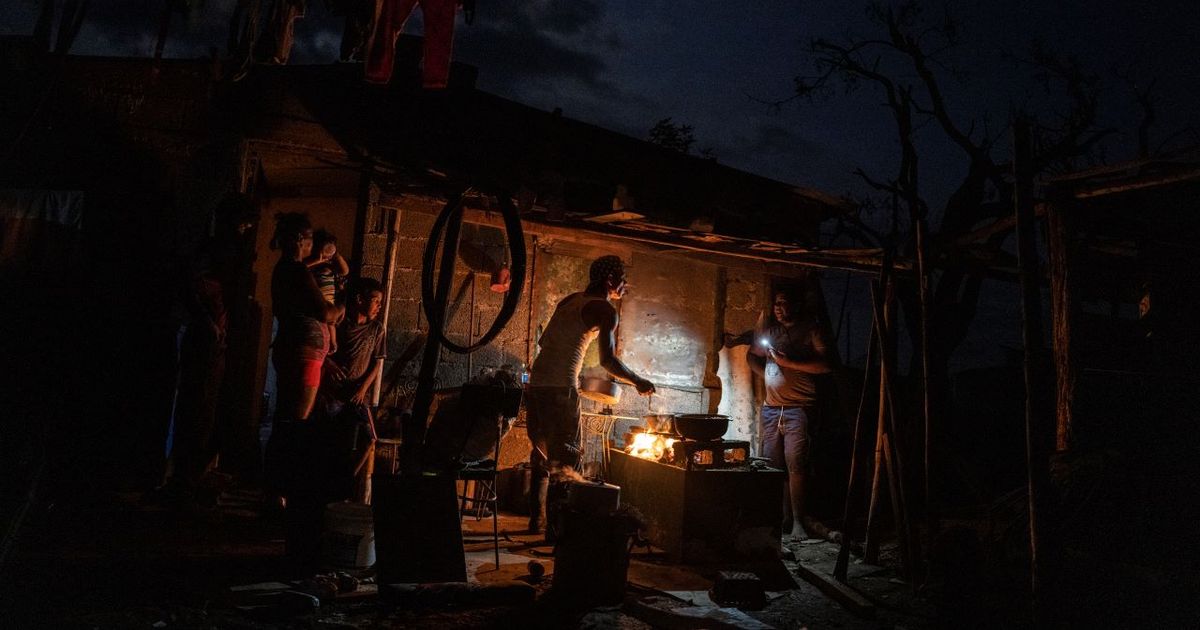The situation directly affects several tens of millions of Americans who have seen their purchasing power reduce by more than 40% since Biden became President in January 2021.
The worst inflation in the last five decades, which has already completed its three consecutive years; the chaos in immigration due to the “Open Door” policy of the current government (more than 9 million migrants have entered or arrived in the country) and the wrong economic policies of the White House have curtailed the financial capacity of the majority of American families.
Los very high prices of properties for sale and high interest rates have driven potential and needy buyers out of the market. In the other section, there are the overwhelmed tenants in rented homes, which see how every six months or a year the owners take advantage of the prevailing chaos and raise the rents between 10% and 15%, with very few options to find something better on the market, in addition to the current cost of move to another place.
Pandemic, orders and aid
In some states and listed urban areas such as South Florida, and counties in California, New York, Texas, Illinois and Arizona; among others, increases can be up to 25% from one year to the next.
The final result has already been announced since the end of 2021 by independent experts and analysis articles in media outlets not aligned with the Biden administration, such as DIARIO LAS AMÉRICAS: An acute crisis of foreclosures and tenants evicted from rented homes who cannot pay.
During the pandemic, then-President Donald Trump issued executive orders three times preventing evictions, due to the humanitarian crisis unprecedented in the modern era in the United States and the rest of the world caused by the COVID-19 pandemic.
Biden then renewed those ordinances two more times with the constitutional power granted to American presidents when facing an emergency situation of that magnitude.
Both resorted to their presidential powers and federal aid approved by Congress in Washington. In this way they avoided a real estate and humanitarian debacle in the country, which would have been much worse than that of 2006-2009.
But in mid-2021, the Supreme Court, in accordance with the rights of homeowners and in the aftermath of the pandemic, ruled the end of the federal authorization of moratoriums on mortgage and rent payments throughout the country, along with a negotiation of the federal government with the banks to add defaults to the total debt of owners and federal aid that stopped the loss of hundreds of thousands of properties in the United States and prevented many from ending up without a rented roof to live on.
But the crisis did not end with the pandemic; On the contrary, it was aggravated by an escalation in prices that remains unfinished and that has put millions of families and individuals against the wall, unable to afford a home or the payment of monthly rent, along with the rest of the fixed expenses.
The serious eviction crisis
In various cities and counties in the US, eviction numbers have doubled.
Only in the first week of Januarythe organization Eviction Lab, from Princeton University, counted more than 9,300 evictions in nine states and 32 cities that it monitors.
In the New York City More than 5,200 families and tenants had been evicted from their apartments since 2022, when the state moratorium was lifted.
“We have seen in recent months a considerable increase in eviction orders in the areas we monitor,” says Jacob Haas, a researcher at Eviction Lab.
In Maricopa County, which also includes the city of Phoenix, Arizona, there are currently more than 3,000 evictions on average each month.
“I typically do 19 to 25 evictions a day,” said Lennie McCloskey, one of 26 sheriffs in Maricopa, which with 4.5 million people is the most populous in that state.
In 19 years executing eviction orders, McCloskey has seen almost everything, but in the last two years “I see people who work, who to support themselves have two jobs; or several families who share the same apartment or house… the salaries do not come with the rent,” describes McCloskey, 68.
“What’s particularly dramatic about Phoenix is how expensive it has become, and how quickly it has happened,” said Glenn Farley, director of the Common Sense Institute, an economic research firm.
To pay a mortgage in the Phoenix metropolitan area you need to work an average of 68 hours a week, explains Farley, compared to 40 hours in 2019. “It is an increase of more than 50%,” Farley emphasizes.
In many states salaries increased, but “the problem is that inflation alone has absorbed these increases and housing costs increased between 40 and 60%,” he summarizes.
A similar situation exists in various regions of the country.
Florida
Since the end of 2022, Florida and especially South Florida have not escaped the eviction crisis, where rental and property prices have doubled and tripled, respectively.
In Miami, any 3-bedroom, two-bathroom home for sale exceeds $650,000, with a mortgage rate of around 7%. To be an owner you must allocate 78.7% of a person’s income and more than 64% in the case of a couple.
Rent for a one-bedroom, one-bathroom apartment or condo ranges from $1,800 to $2,400 per month; A home with three bedrooms and two bathrooms exceeds $3,000. In downtown Miami, the payment rises above $4,000.
As of 2022, eviction orders in Florida number several thousand each month between West Palm Beach, Broward and Miami-Dade counties. The figures double the average compared to 2019.
The price crisis in South Florida and particularly in Miami-Dade County has displaced thousands of residents to the central-west and north of the state, or to other states.
Miami and Miami Beach have been, in the last three years, among the most expensive cities in the US to live in, at the same level or above cities such as New York, San Francisco, Los Angeles, Houston and Chicago.
In the opinion of experts, there is now a reciprocal migratory flow in Florida. People continue to come to live from other states and residents of the south and center also emigrate to less expensive regions towards the center and north of the nation. However, fewer and fewer states are affordable for the average worker. In the vast majority of the 50 states, virtually nothing is cheap anymore.
The most affected
Eviction filings are more than 50% higher than the pre-pandemic average in some cities, according to statistics from Eviction Lab. Landlords now file more than 4 million eviction cases each year.
According to the real estate agency Zillow, rental prices across the country have risen more than 40% compared to 2019
The most affected, as expected, are low- and middle-income individuals and families, facing a deficit of more than 8.6 million affordable units nationwide, according to data from the National Low-Rise Housing Coalition. Income.
The great concern of the state authorities does not end in the evictions, but in the other serious problem that derives from the first: the high number of people who are forced to go to temporary shelter or live on the streets under tent houses, faced with the impossibility of finding a roof they can afford.
At the moment, the crisis throughout the country is worsening, immediate solutions are not in sight, much less the end of a tragedy that could drag down tens of millions of people between 2024 and 2025 if there is no substantial change to the current ones. economic policies, which have raised the cost of living to a level never seen in the United States.
(email protected)



